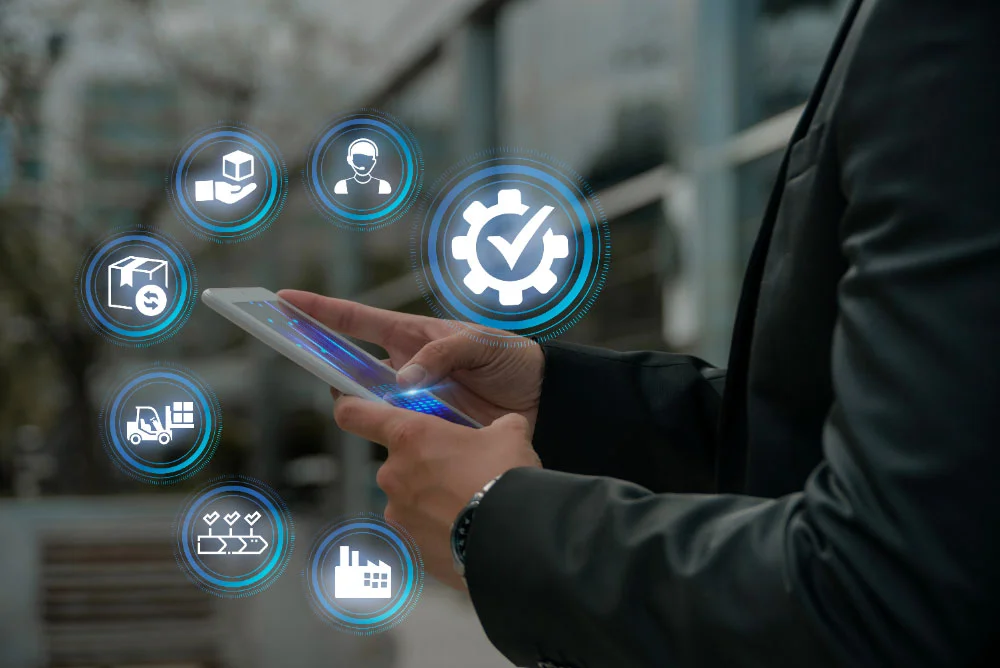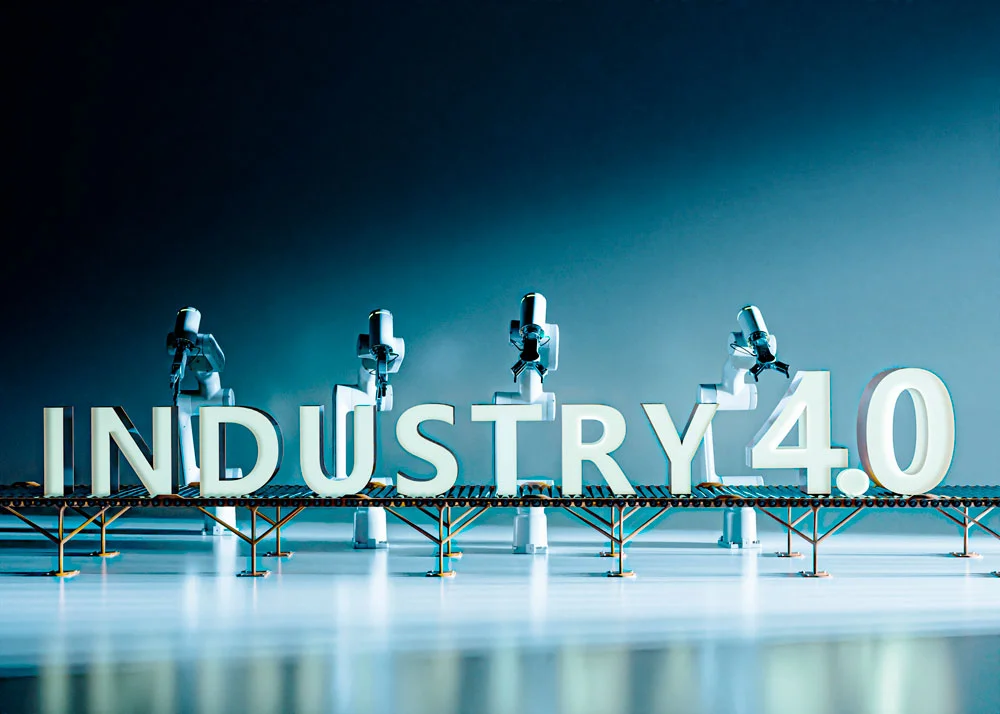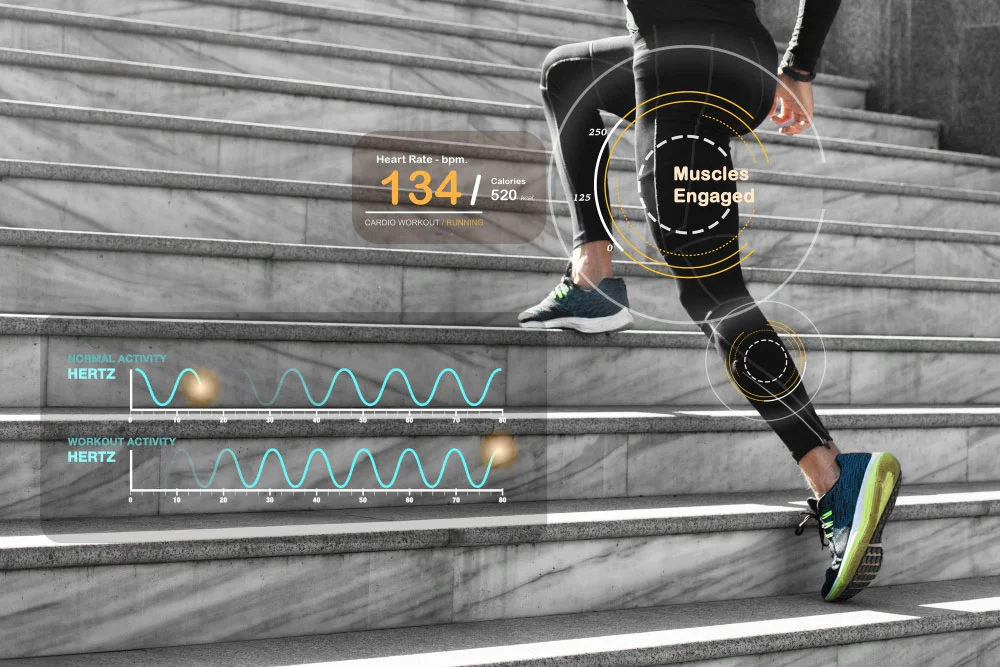IoT Industry
- Home
- IoT Industry
IoT in Energy

- Tough emission regulation,
- Growing reliability expectations,
- Aging infrastructure,
- The spread of distributed energy resources,
- Frequent accidents
Offers
- On premises/Off premises IoT connectivity
- Various Automation system and data loggers
- Scalability in the existing system
Production Optimization And IoT

The Internet of Things has a huge and growing influence on production enterprises, transforming business and operational processes and creating smart factories. And it’s true to say that IoT is one of the core driving forces behind Industry 4.0.
IIoT
IIoT is nothing but, all the systems of interconnected industrial assets(machinery equipment, vehicles, warehouses, shop floors and inventory etc..) with embedded software and build in sensors for collecting and exchanging data.
The IoT communications servers, database system and webserver can be in cloud/premises. Manufacturing is the creation of a wide range of goods based on human labor and machine utilization. In recent decades, the industry has been implementing various digital technologies that have gradually reduced human participation in production processes Many enterprises have adopted smart manufacturing. — The industrial branch based on intelligent automation and empowered by innovative solutions. IIoT and AI together analyses the processed for the optimal resource usage.
Offers
- Shop Floor Operations by collecting real time data from various machines
- Security zones and minitoring security zones
- Predictive Maintenance
- Industrial Asset management
Fitness And Remote Monitoring

Now a days, it is easy to use fitness bands, heart rate monitoring cuffs, blood pressure measuring bands, glucometer, and more advanced smart healthcare devices provide patients with real-time personalized health status. These devices has changed the lifestyle and keeps you alarming about your regular exercise and diet.
Remote patient monitoring system is a combination of RFID and IoT based technology which helps to constantly monitor patients through medical sensors.
Smart Hospitals
The IoT in healthcare is capable of monitoring the regular and minute details of the patient’s health. Apart from this, there are several other aspects where IoT makes healthcare industry to perform better.
One of the aspects is Asset Management. It can bee the wheelchair, oxygen pump, nebulizer, defibrillator, or some other monitoring equipment, keeping real time track of these assets is one of the major IoT application. Medical staffs are required to be present at different locations, and their deployment could also be traced easily. Hospitals are vulnerable, and the spread of infections is a huge concern. With IoT enabled hygiene monitoring devices, smart hygiene monitoring has become a thing of the past.
Offers
- Wearables to sense Glucose, heart rate, activity tracking monitoring
- Wireless sensors kept in refrigerators to ensure blood samples, chilled medications, and other biomedical materials are always kept at the proper temperatures.
- Asset Management to track the assets in hospitals
- Location based health services to track the nearest services.
Goods Tracking
Freight and logistics are intimately related in the transportation industry. Freight services involve moving freight by transportation system, while logistics involves the coordination of freight’s movements, from warehousing to distribution across locations.
Amenities
- Wearhose indoor tracking of the freight
- RF Tagging of the freight for the tracking and ERP system integration.
- Tracking of the items with specific query.
Vehicle Tracking
The prevalence of economical GPS enabled smart phone devices makes it possible to implement individual/vehicle tracking functionalities, and integrating with near real time data transfer. Data management at server side provides maximum benefits in terms of visualisation, monitoring and management. Vehicle tracking systems make it possible to have an instantaneous and history tracking of vehicle speeds, the routes they followed, stopping points, idling times on maps providing a registry and check point with past and present reports.
Warehose Management
Warehousing is becoming more and more a critical activity in the supply chain to outperform competitors on customer service, lead times, and costs. However, if warehousing is to be a source of competitive advantage, then the implementation of a warehouse management information system (WMS) is a necessary condition to achieve efficiently the high performance of warehousing operations required in today’s marketplace.
IoT plays an important role in tagging the items with low cost electronics and tracking the item with indoor tracking system. Of, course integration of modern electronics with current WMS software is necessary.
Offers
- End to End solution for the tracking of vehicle
- Customized services like drivers live alerts, vehicle health and fuel levels
- RTLS: Knowing the exact location of all people and machines (e.g. Forklift Tracking) in real-time has a powerful impact on your business’s ability to prevent and respond to emergency situations.
- Accurate Inventory: Low cost RF tagging/bar code scanners helps to maintain all the Perform all your inbound and outbound operations from a smartphone.
Home Automation

Offers
- Embedded Systems
- IoT Edge custom development
- IoT end to end developemnt
- Mobile applications for dashboard/location based systems
